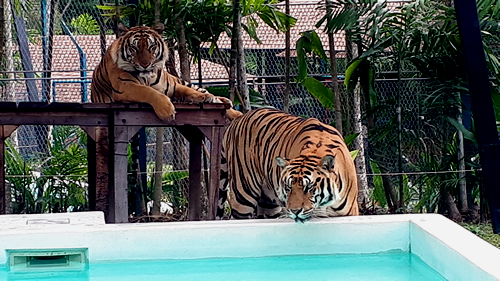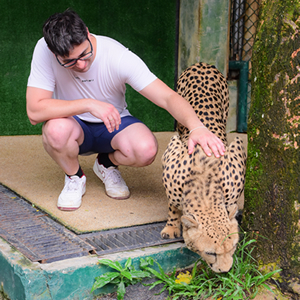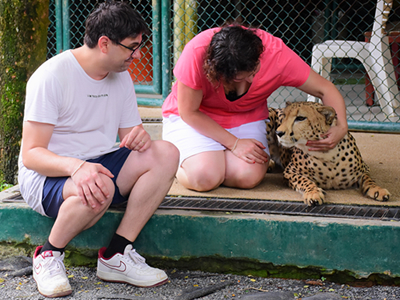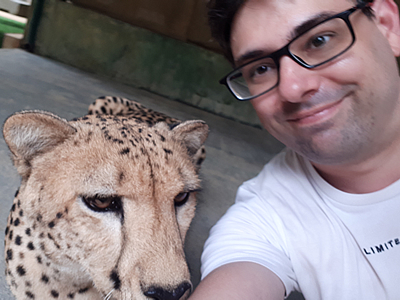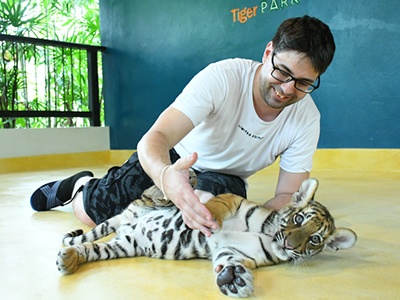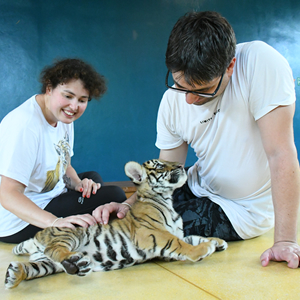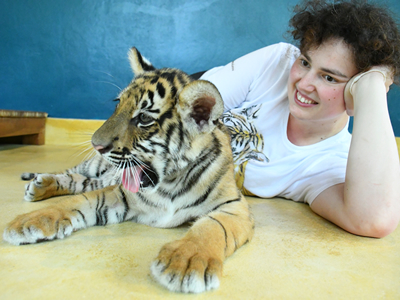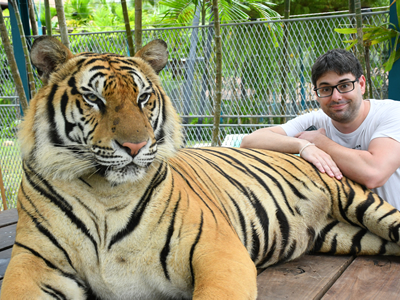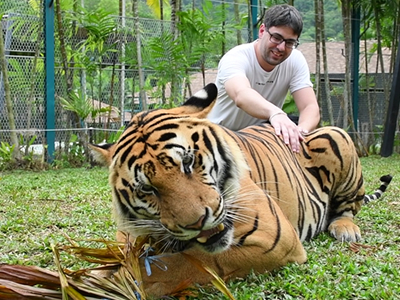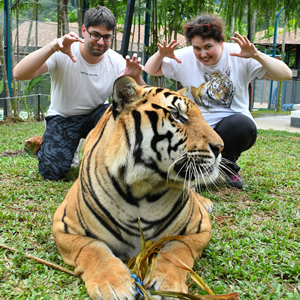Face to face with Bengal Tigers
Tiger Park (Thailand).
a center open to the public with a twofold mission: to raise awareness about the world of big cats — particularly Bengal Tigers — and to collect funds for the protection of the roughly 300 wild tigers that still live in the country’s reserves.
Admission Test
As soon as I arrived, the first to welcome me was a very special "kitty": an affectionate cheetah who greeted me with purrs and gentle cuddles, immediately breaking the ice with an unexpected note of sweetness.
Before diving into the heart of the day, I was asked to sign a life insurance waiver. A formality that made me smile — but also think. No matter how accustomed they are to human presence, these are still wild animals.
I was told that each tiger in the park is assigned a personal handler from a very young age. This one-on-one relationship is essential to building a bond of trust — vital both for the animal’s well-being and for everyone’s safety. During every interaction, the handler is always inside the enclosure, making sure the tiger feels calm and protected.
It all begins with the cubs
After a brief introduction to the habits of tigers — including the curious fact that, unlike most felines, they don’t purr and they actually love water — I began my journey. The first stop was a playful encounter with a tiny cub, just a month and a half old: small, irresistibly cute, and yet already carrying that proud look in her eyes.
Next, I met a pair of siblings — a male and a female — about a year old. I was advised to be cautious: at that age, they’re extremely playful, and although unaware of their own strength, they can unintentionally cause harm.
Before entering the adult enclosure, I was given a small test of strength: hold up a skewer with meat as high as possible to simulate the height of a full-grown tiger. I’m 1.75 meters tall... and it wasn’t enough. The tiger reached the meat with stunning ease.
After lunch, I received another briefing about the unique traits of the Bengal Tiger. For example, I learned that as they mature, a white spot appears on the back of their ears — a visual marker that looks like a pair of eyes, helping cubs follow their parents through dense vegetation.
The majestic Bengal Tiger
For safety reasons, I was told I could only enter the enclosures with adult males, as they are less territorial than females, especially during the period when females are raising cubs.
I was given clear instructions on how to behave: never stand directly in front of the tiger, don’t touch its face, avoid sudden movements or loud noises. When the time came to decide whether or not to go in, a bit of hesitation was natural. But the desire to live that moment outweighed any fear.
Inside the enclosures, everything was carefully maintained: the spaces were large, clean, with pools where the tigers could swim and cool off. Each enclosure housed two adult males. And it was there, beside them, that I felt something hard to describe — a mix of awe and deep gratitude. Being so close to such majestic creatures, looking them in the eye, sensing their presence... it’s something that stays with you.
It’s a disarming experience. You stand before a majestic predator, capable of immense strength — and yet you find yourself laughing as it follows you with curious eyes, just like a playful cub. In that moment, you understand that true respect isn’t born out of fear, but out of wonder.
A day I will never forget.
